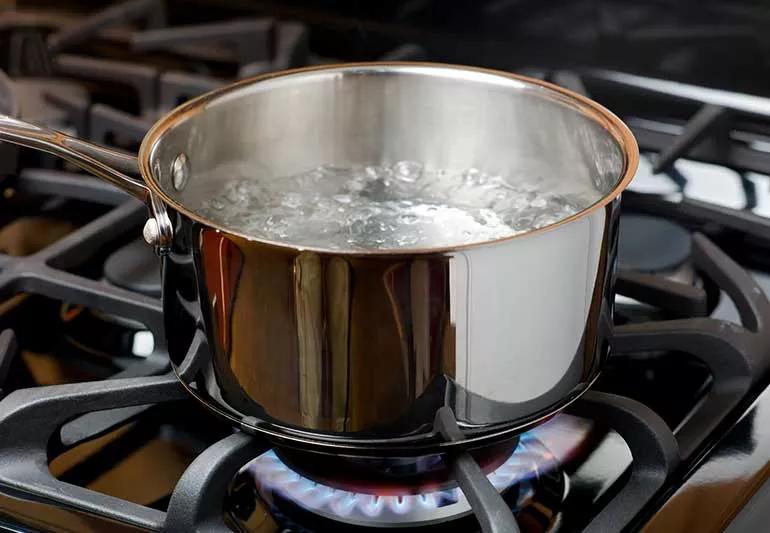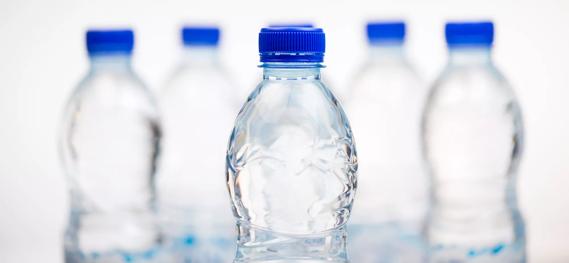Testing your well water system annually can help prevent contaminants and bacterial overgrowth

Water is perhaps our world’s greatest resource and the key to life on this planet. Recommendations vary on how much water you should drink in a day, but healthcare providers agree: Drinking water throughout the day is an important part of making sure your body stays healthy and hydrated.
Advertisement
Cleveland Clinic is a non-profit academic medical center. Advertising on our site helps support our mission. We do not endorse non-Cleveland Clinic products or services. Policy
But how often do we think about where our water comes from and the ways our water is treated before we drink it?
For people who live in more rural areas and without access to public water systems, understanding how your well water system is working and knowing the health of your water is crucial to your overall health and well-being.
“A lot of people feel water is more natural when it’s from the earth and it’s not filtered and, therefore, better for them,” says functional medicine specialist Erik Modlo, MD. “But well water also has a downside depending on where it’s coming from and what’s going into it. Things like water runoff, flooding, animal waste products, fertilizers, chemical compounds — these things are going to be leached into your water and they can create other problematic issues for your health if you’re not careful about maintaining your well water.”
Dr. Modlo explains some of the signs your well water system may need some attention and some of the risks at play.
Cooking, cleaning, laundry, gardening, cold showers and hot baths — you use water for a lot of household activities. But having a well water system requires a little more vigilance to make sure that water is safe to ingest and use on your skin.
Advertisement
“Depending on the age of your house, you could have old copper or lead piping, and well water can leach other things from that piping,” states Dr. Modlo.
And according to the U.S. Centers for Disease Control and Prevention (CDC), well water can become contaminated by other means, including fertilizers, pesticides, manufacturing operations, sewer overflow, stormwater, animal waste, and cracks or corrosion in your water pipes and well water system.
“Ingesting poor well water has more danger in the long run because that water and all of its contaminants will be absorbed throughout your body, disseminated through your bloodstream and filtered out through your kidneys and other organs,” explains Dr. Modlo.
If you move into an older home with a well water system that’s gone untested for months or years, or you experience flooding or other natural disasters, you run the risk of bacteria overgrowth and other contaminants building up in your well water system. Some common contaminants of concern include:
The U.S. Environmental Protection Agency (EPA) has strict guidelines on public water testing, including legal limits for more than 90 contaminants. Each community water system is also required to provide annual Consumer Confidence Reports to its residents that highlight monitored contaminants in the water and whether they meet state and federal standards.
But well water systems aren’t regulated by the state or federal government, so it’s up to the owner of the well to test their own systems. Because of this, Dr. Modlo recommends having your well water tested annually (usually in the spring) to check acidity levels, bacteria growth and the presence of other contaminants.
“I would suggest testing your water as part of your home inspection if you’re buying a new house before you take over the property, and then you’ll want to test on a routine basis about once a year,” he advises. “Your water quality can damage your pipes because of the acidity of it, so it might also draw more minerals from whatever plumbing system you have in your house if you don’t keep up with the maintenance over time.”
Aside from those minimal preventive measures, the first sign of trouble may appear long before you get sick if you know to look out for the following characteristics:
Advertisement
“If you have hard water with too much magnesium, calcium and salts, those are going to dry out your skin and that can also clog up some of your pores,” Dr. Modlo adds. “If you’re getting a film of soap scum in the shower or on your body, that might be an issue you have to look into.”
Hard water is high in mineral content and will cause soap scum to appear, as well as spots on dishes and glassware. Sometimes, you might also experience mineral stains or less water pressure in your home. If you have trouble with hard water, a water softener can filter out the excess minerals.
In the case of flooding or other natural disasters, a water main break or sewer overflow, local authorities are responsible for notifying affected areas of possible contaminations and whether you should boil your water first before ingesting it. In most cases, you may want to boil water before ingesting it for a couple of days up to a week after a flood or other overflow.
Advertisement
“You want to boil water for at least 1 minute (and longer if you’re above an elevation of 6,000–7,000 feet) to take away some of the possible bacteria that have contaminated your water,” points out Dr. Modlo, “but if it has toxic chemicals or radioactive materials in it, you’re not going to be able to boil that off.”
If you ever notice a change in the color, smell or taste of your well water, you can contact your local health department or a state-certified laboratory to assist in testing for possible contaminants so you can fix the underlying cause. If you’re not sure who to contact, the EPA has a helpful tool to locate private well water programs in your state.
For extra precaution, it’s always a good idea to consider relying on a water filter to supplement your well filtration system. Water filters can be attached to your fridge, faucet or pitchers at home to help reduce the risks associated with well water or public water. While fridge filters, pitchers and faucet attachments may need to be switched out on a regular basis, other whole-system filters will need to be maintained over time.
When searching for a water filter, make sure you read the label to see which chemicals, germs or materials they remove from the water. One thing to consider is that just because a filter removes one contaminant, it doesn’t mean it will remove others.
Advertisement
Additionally, some filters will also remove fluoride from the water, which you may not want to do. Fluoride is an important, safe chemical to ingest in small amounts, particularly for children, because your body absorbs it and incorporates it into the structure of your teeth to make them stronger.
But the point is, you have a multitude of options if you’re concerned about water safety and any potential toxicity or harm that could be caused by a compromised well. In addition to routine testing, maintenance and check-ups with your healthcare provider, having a filter only helps optimize the well water you’re using and ingesting.
“I would recommend using a filter for most individuals,” Dr. Modlo states.
Learn more about our editorial process.
Advertisement

Consumption needs vary based on activity, weather, metabolism and other factors

A glass of lemon water in the morning can help with digestion and boost vitamin C levels, and may even help get you into a better routine

Mold and bacteria in your reusable water bottle can cause health issues like infections, respiratory issues and allergic reactions

Sitting in the dry heat may help reduce stress, improve heart health and relieve pain

Adding salt to your water isn’t going to have measurable benefits — but there may be plenty of downsides

Drinking untreated water can have dangerous consequences, like bacterial infections

Although it adds to your hydration, this water may be pushing you over the limit of the daily recommended dosage of caffeine

If you’re trying to drink less soda or fewer sugary drinks, flavored water can be a delicious and healthy alternative

If you’re feeling short of breath, sleep can be tough — propping yourself up or sleeping on your side may help

If you fear the unknown or find yourself needing reassurance often, you may identify with this attachment style

If you’re looking to boost your gut health, it’s better to get fiber from whole foods